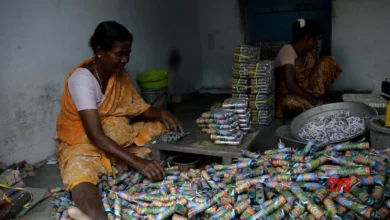-
Trends

Elon Musk denies reports of him firing Twitter employees to avoid a $100 million payout
Elon Musk denies reports of him firing Twitter employees to avoid a $100 million payout Elon Musk has refuted rumors…
Read More » -
Trends

Forex store in India dips faster than peers
Forex store in India dips faster than peers MUMBAI: Shaktikanta Das, governor of the Reserve Bank of India (RBI), remarked…
Read More » -
Trends

Google Fined $113 Million in Second India Antitrust Penalty
Google Fined $113 Million in Second India Antitrust Penalty As punishment for “abusing” its dominant position on its Android mobile…
Read More » -
Trends

Tata Play, Airtel Digital TV, Sun Direct, And Dish TV’s Accounting Under Scrutiny: Report
Tata Play, Airtel Digital TV, Sun Direct, And Dish TV’s Accounting Under Scrutiny: CAG Report Towards the end of last…
Read More » -
Trends

In Sivakasi, fireworks companies are eyeing a market dominated by China for Rs 6,000 crores
In Sivakasi, fireworks companies are eyeing a market dominated by China for Rs 6,000 crores China has a turnover of…
Read More » -
Trends

A wave of flight delays plagues IndiGo making it one of the most unsafe airline in India
A wave of flight delays plagues IndiGo NEW DELHI: Its constant tardiness is a problem for IndiGo. According to monthly…
Read More » -
Trends

As West sanctions tighten on Russia, India turns to Canada for discounted crude oil
As West sanctions tighten on Russia, India turns to Canada for discounted crude oil According to oil-tracking company Vortexa, Canadian…
Read More » -
Trends

Top 10 Best Stock Photo Sites In India 2023
Top 10 Best Stock Photo Sites In India 2023 Any company wishing to visually enhance a project can use the…
Read More »
